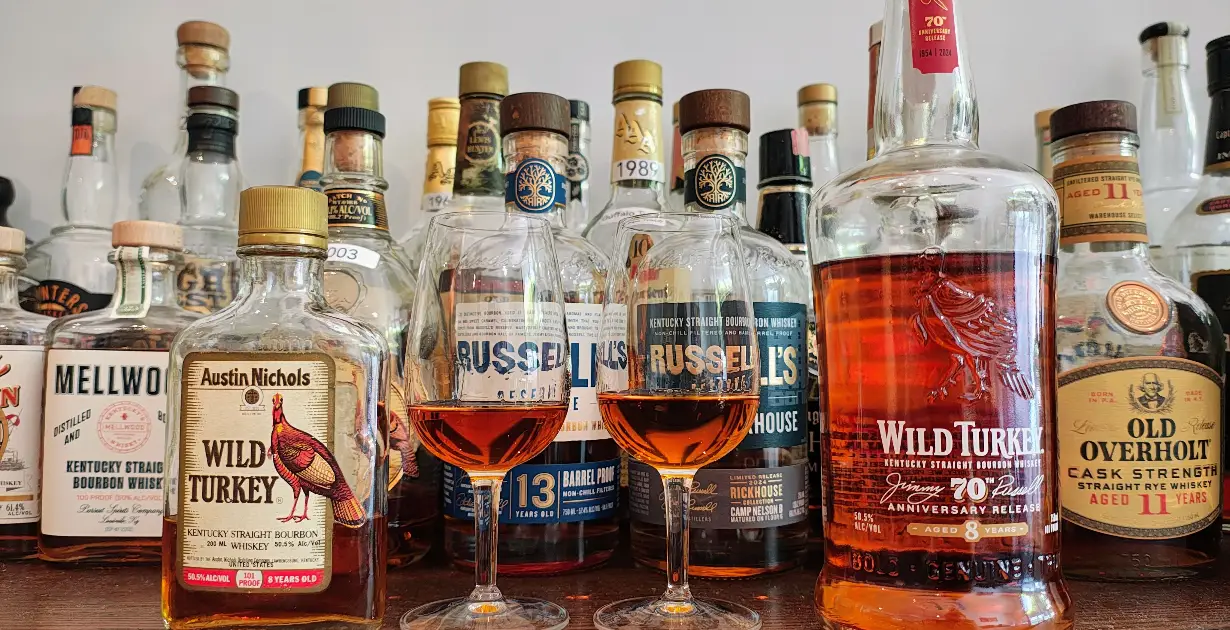
The hype around dusty Wild Turkey has skyrocketed alongside the bourbon boom of the last decade. Bottles from the 1980s, 1990s, and even early 2000s now command serious premiums. But why? What makes older Wild Turkey so desirable that enthusiasts are willing to pay multiples over modern releases?
To answer that, we need to look at how Wild Turkey’s production has evolved—and then taste those differences in the glass by comparing a 1989 8-year 101 with this year’s 8-year 101 70th Anniversary edition.

Why Vintage Turkey Tastes Different
The simplest explanation for the “dusty Turkey” craze comes down to production philosophy.
When Jimmy Russell began at Anderson County Distilling Co., he learned hands-on whiskey making from Bill Hughes, a pre-Prohibition master distiller. That mentorship carried forward a production ethos grounded in long aging, higher proofs, and an uncompromising quality-first approach. Classic Wild Turkey became known for being aged 8+ years and bottled at 100+ proof—well above the 80–86 proof standard many distillers adopted post-Prohibition.
Today, Bruce Russell often describes Wild Turkey in terms of eras: “Jimmy whiskey” and “Eddie whiskey.” And the difference between those eras is not subtle.


Jimmy Russell’s Era
Jimmy’s ideal whiskey sits in roughly the 8-10 year age range, with a roughly 100+ proof when bottled. The barrels are filled at a relatively low strength, for Turkey this was 107 proof. Cut points are made slowly and carefully, then blending is done with a sensory first approach.
The distillery was also smaller, more hands on, and less automated. They used cypress wood fermenters which were slowly phased out from 1984 onwards. Jimmy’s era is really defined by his signature 8 year 101 proof, as well as the even more sought after 12 year 101 proof limited editions.
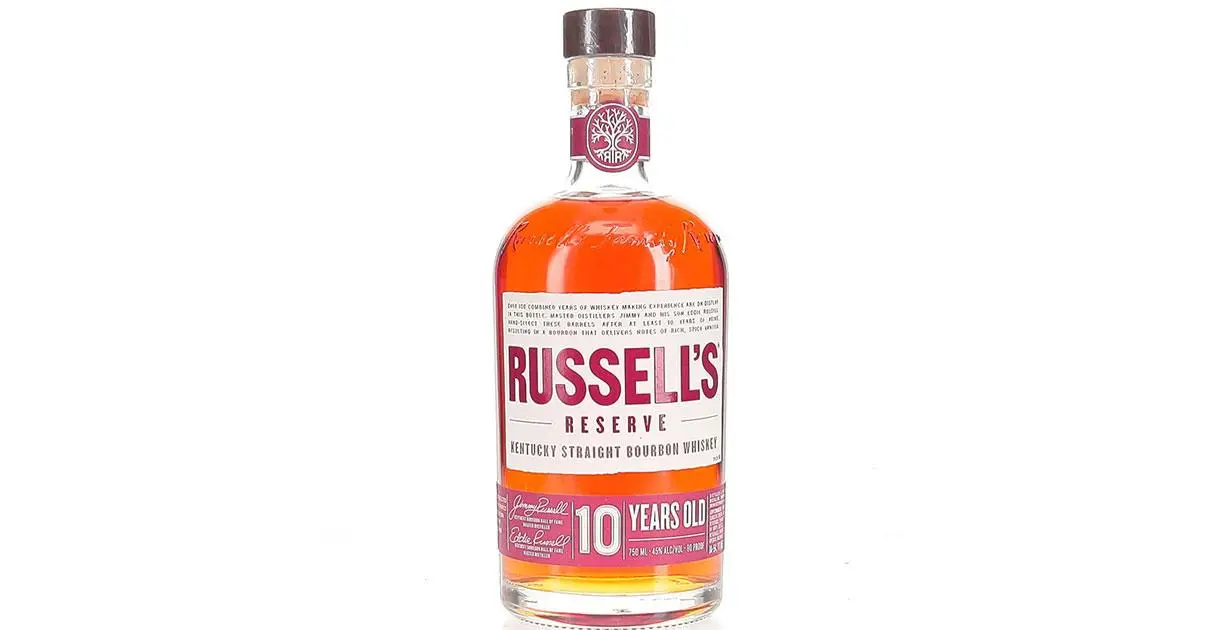
Eddie Russell’s Era
Eddie’s ideal whiskey on the other hand sits in that higher age range, really anywhere from 10-15 years of age. Eddie also prefers a lower proof, hence why the Russell’s Reserve 10 year, the flagship Russell’s named product is now bottled at 90 proof.
Eddie also brought innovation to the more classic style that Turkey was bottling. His Master’s Keep range saw whiskies as old as 17 years, also introducing finished whiskies with the likes of Revival and Journey.

 Wooden fermenters in use at Maker’s Mark
Wooden fermenters in use at Maker’s MarkThe Production Shifts That Define “Old vs New
Eddie joined the distillery in 1981, right as major changes began.
The phasing out of Cypress wood, open-topped fermenters that interact with the mash, undeniably influenced the spirit. Stainless steel was introduced in 1984 and Cypress fully removed by the mid-1990s. Stainless is neutral, so fermentation is more consistent, but can arguably lead to a less flavourful mash.
In addition, the barrel entry proof shifted in the early 2000s. Wild Turkey was filling at 107 proof, a lot lower than the legal 125 maximum a lot of other competitors use. Lower proof, higher evaporation, more lost whiskey, but arguably more flavourful compounds created in a shorter period of time.
In 2004, they upped entry proof just a tad to 110, then it was raised to 115 in 2006. Additionally, the higher the entry proof the more water needed to bring it down to that signature 101 proof, thus losing more flavour.
Tasting the Two Eras Side by Side
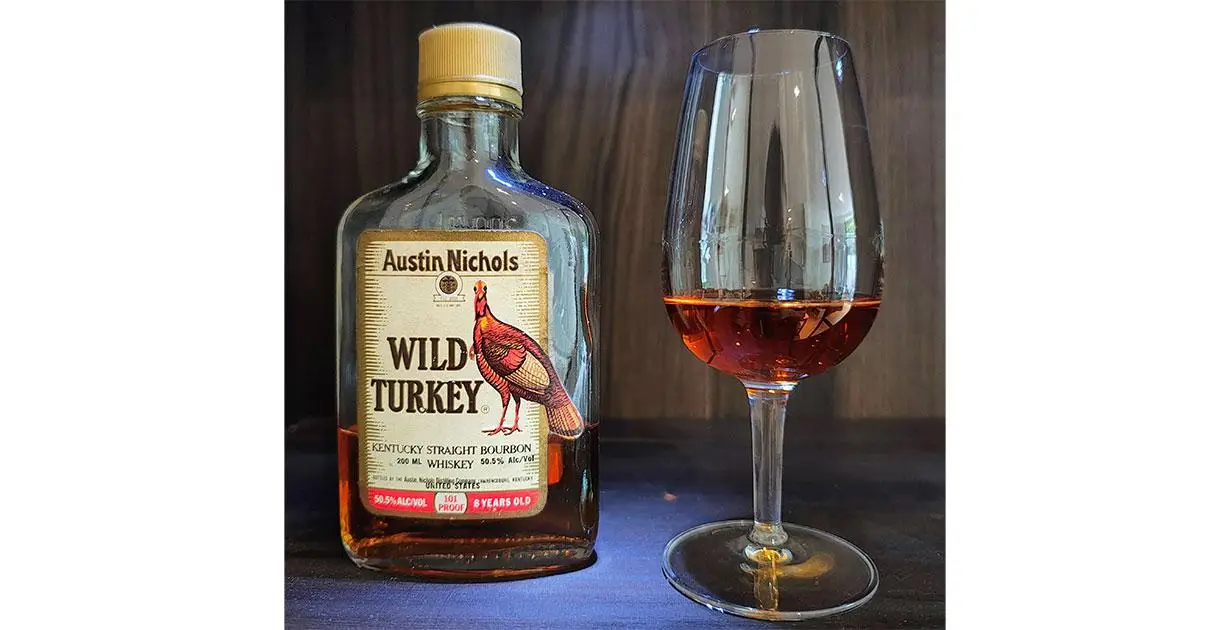
Wild Turkey 8 Year Old 101 Proof (1989 Bottling)
Nose: Cola bottle sweets, cherry cola, deep wood sugars, star anise/liquorice, treacle, molasses, golden syrup. Dense and dark. Classic Turkey clove with a touch of orange peel.
Palate: Brown sugar, worn leather, oak tannins, caramel that fades into dry anise. Dark chocolate, cherries. Excellent body—rounded, chewy, substantial.
Finish: Gentle but evolving. Leather, cherries, drying oak. No ethanol; lingers softly with aged-oak depth.
Thoughts: Deep, dark, structured, and mature. Good, chewy whiskey. Anise and wood sugars layer beautifully. This feels like older whiskey—and almost certainly is, given the glut-era conditions.
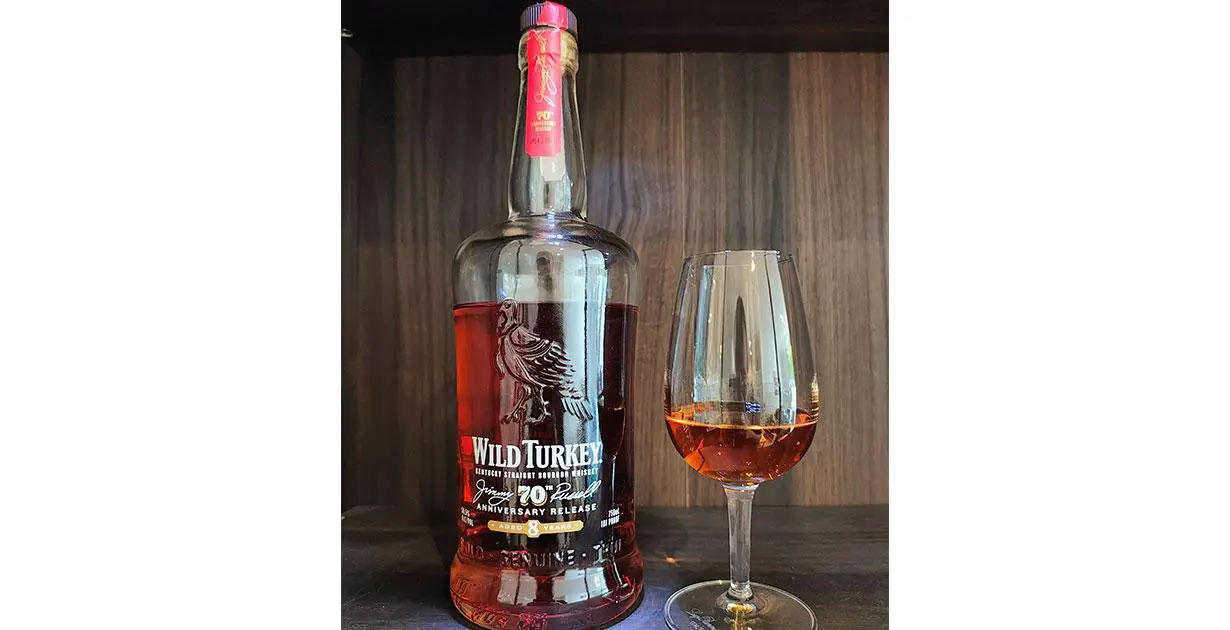
Wild Turkey 8 Year Old 101 – 70th Anniversary
Nose: Rock candy, lemon peel, buttered popcorn, pineapple sweets, ginger ale, fizzy old-school lemonade.
Palate: Sweet caramel, Werther’s Originals, buttered popcorn. Bright lemon peel and a refreshing pineapple pop mid-palate. Medium-to-thin texture; less oak, more center-palate sweetness.
Finish: Light and sweet—pineapple, lemon peel, caramel. Pleasant but short due to the thinness.
Thoughts: Approachable and tasty, with bright fruit and easy sweetness. But noticeably lighter and less structured than the vintage bottle.
So Which Is Better?
I think the notes make it obvious: the 1989 bottling stands well above the modern release.
It tastes older, richer, darker and just better honestly. And that tracks with production realities.
The 1989 “8 Year” likely included older stock. It came from a period of lower entry proofs, heavy use of cypress fermenters, and a glut of well-aged bourbon. The 70th Anniversary—blended from 8–9 year barrels—is good, but it’s lighter, brighter, and simply more modern. It’s designed to be friendly, not profound.
It should always be noted though, that taste is personal and subjective. I may prefer this older bottling, but you may prefer the lighter and more fruity character from the modern edition. There’s no “right” answer, just preference.
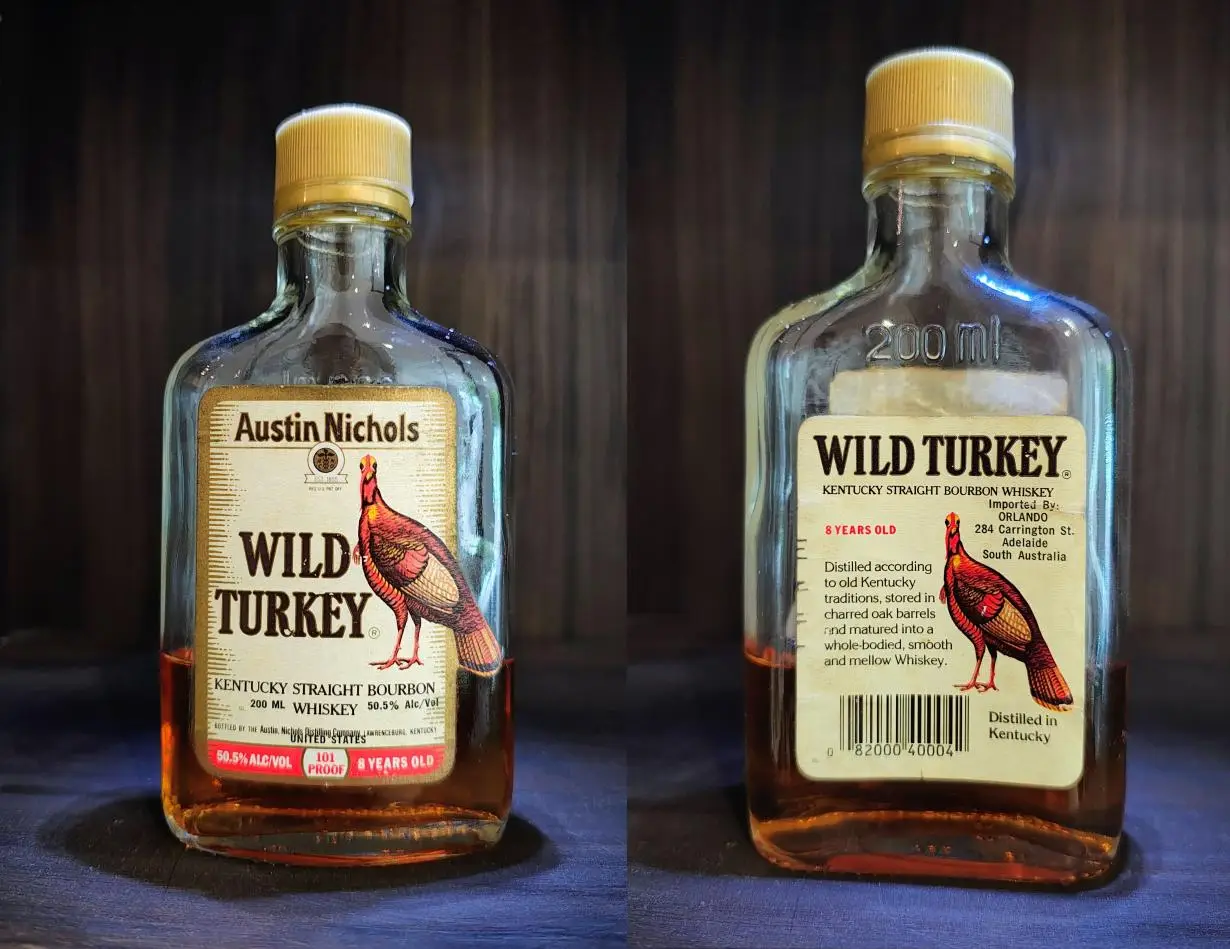
Final Take
It’s easy to see why dusty Turkey has a cult following.
The old production methods—lower entry proof, wooden fermenters, older stock—produced whiskey with undeniable depth and character. Modern Turkey is still excellent, but a bottle like the 70th Anniversary is built for broad appeal, not the complexity provided by the 1980s release.
As part of our 2025 Wild Turkey hunting event at BAXUS, enthusiasts will have the chance to chase some of this year’s most coveted releases. Two highly allocated bottlings will be featured: the Russell’s Reserve 13 Year (Spring 2025) and the Camp Nelson E Single Rickhouse release.
Keep a close eye on our socials, and be sure to sign up for both BAXUS and Boozapp for your shot at snagging some MSRP allocated Turkey this Thanksgiving!
